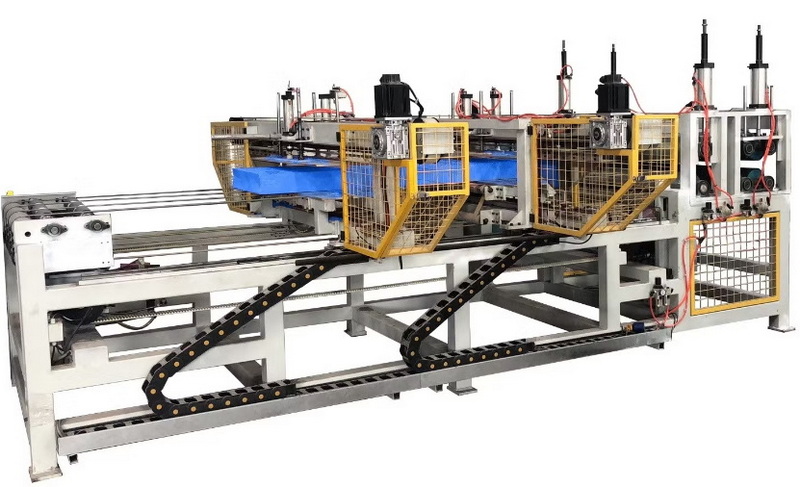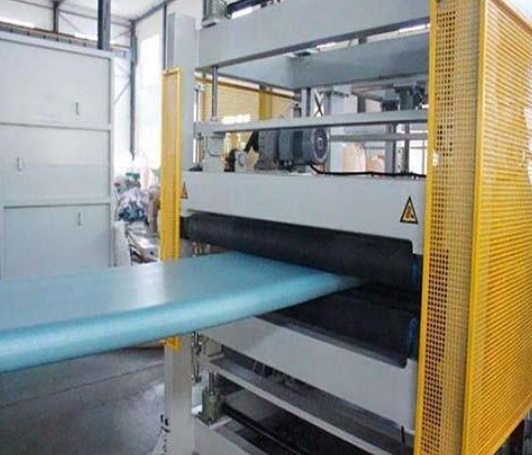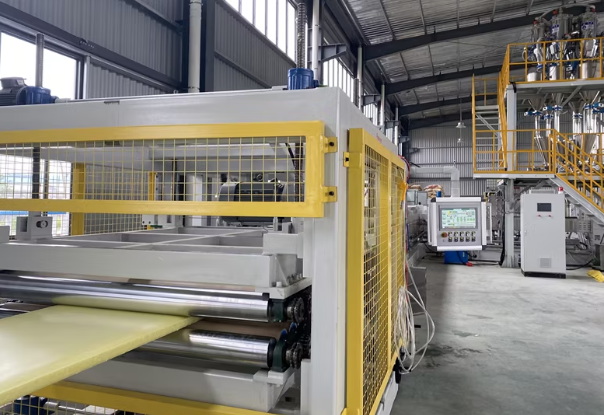Content Menu
● What is XPS Foam Board?
● Evolution of XPS Extrusion Technology
>> Historical Development
>> Key Innovations
● Role of XPS Foam Board Extrusion Equipment
>> 1. Primary Extruder
>> 2. Blowing Agent Injection
>> 3. Secondary Extruder
>> 4. Slot Die Assembly
>> 5. Calibration Stack
>> 6. Cutting/Stacking
● 7 Ways Extrusion Technology Enhances Insulation Performance
>> 1. Precision Cell Structure Control
>> 2. Moisture Management
>> 3. Thermal Efficiency Optimization
>> 4. Fire Resistance
>> 5. Dimensional Stability
>> 6. Sustainable Production
>> 7. Customizable Properties
● Global Standards and Certifications
● Applications in Building Insulation
>> Residential Construction
>> Commercial Projects
>> Infrastructure
● Case Study: Net-Zero Energy Hospital
● Future Trends in XPS Extrusion
>> Smart Manufacturing
>> Circular Economy
>> Energy Efficiency
● Conclusion
● FAQ
>> 1. How does XPS extrusion compare to polyurethane spray foam?
>> 2. What's the maximum board size achievable with modern extruders?
>> 3. Can XPS insulation be used in radiant floor heating systems?
>> 4. How do extrusion parameters affect fire performance?
>> 5. What's the carbon footprint of XPS production?
Extruded polystyrene (XPS) foam insulation has become a cornerstone of energy-efficient construction due to its closed-cell structure, moisture resistance, and high thermal performance. At the heart of its production lies advanced construction XPS foam board extrusion equipment, which transforms raw materials into rigid insulation boards that outperform traditional alternatives like EPS. This article explores how modern extrusion technology enhances building insulation while addressing sustainability and cost-effectiveness.

What is XPS Foam Board?
XPS foam board is a rigid insulation material manufactured through a continuous extrusion process. Polystyrene resin, combined with physical blowing agents like CO₂ or HFCs, is melted, mixed, and forced through a slot die. As the material exits the die, pressure drops trigger foaming, creating a uniform closed-cell structure. Key properties include:
- Thermal resistance (R-5 per inch)
- Compressive strength (up to 1,200 kPa)
- Water absorption ≤2%
- Long-term durability (>1,000 freeze-thaw cycles)
The manufacturing process begins with polystyrene pellets being fed into the construction XPS foam board extrusion equipment, where they undergo precise temperature control (200–250°C) and pressure regulation (10–15 bar). This ensures optimal polymer chain alignment and cell formation.
Evolution of XPS Extrusion Technology
Historical Development
Early XPS production in the 1950s relied on manual batch processes with limited thickness control. The 1990s saw the advent of twin-screw extruders, enabling continuous production and improved density consistency. Modern systems now integrate AI-driven monitoring for real-time adjustments to temperature, pressure, and feed rates.
Key Innovations
1. Co-Extrusion Layers: Dual-layer dies apply protective polymer skins to enhance moisture resistance.
2. Nano-Additive Integration: Graphene-enhanced polystyrene improves thermal stability by 18%.
3. Variable Die Systems: Adjustable die lips allow instant thickness changes from 20 mm to 200 mm.
Role of XPS Foam Board Extrusion Equipment
Modern construction XPS foam board extrusion equipment comprises six critical subsystems:
1. Primary Extruder
- Twin-screw design (L/D ratio 32:1–40:1)
- Zone temperatures: 180°C (feed) → 240°C (melt)
- Output capacity: 800–1,500 kg/hour
2. Blowing Agent Injection
- Supercritical CO₂ injection at 73 bar
- Agent recovery systems reduce waste by 95%
3. Secondary Extruder
- Cools melt to 110°C for uniform cell growth
- Shear rates controlled within 100–500 s⁻⊃1;
4. Slot Die Assembly
- Width: 600–1,200 mm
- Land length: 50–80 mm for optimal pressure drop
5. Calibration Stack
- Three-stage vacuum calibration (0.5–0.8 bar)
- Surface finish: Ra ≤3.2 μm
6. Cutting/Stacking
- Flying cutters with ±0.5 mm tolerance
- Automated palletizing (120 boards/hour)
7 Ways Extrusion Technology Enhances Insulation Performance
1. Precision Cell Structure Control
Advanced construction XPS foam board extrusion equipment achieves cell densities of 35–45 cells/cm³ with wall thicknesses of 2–5 μm. This closed-cell matrix reduces convective heat loss by 92% compared to open-cell materials.
2. Moisture Management
Hydrophobic additives (0.5–1.5% by weight) create contact angles >110°, preventing capillary action. XPS maintains 98% R-value retention after 30-day water immersion.
3. Thermal Efficiency Optimization
The extrusion process aligns polymer chains parallel to heat flow, achieving λ-values of 0.028–0.034 W/m·K. Multi-zone cooling ensures uniform crystallinity (<5% variation).
4. Fire Resistance
Flame-retardant hexabromocyclododecane (HBCD) is added during extrusion, achieving Class B1 fire ratings (EN 13501-1). Smoke density remains below 450 (ASTM E662).
5. Dimensional Stability
Post-extrusion annealing at 60°C for 24 hours limits linear expansion to <0.3% (ASTM D2126). Boards withstand -40°C to 75°C without warping.
6. Sustainable Production
Closed-loop CO₂ systems recover 85% of blowing agents. Recycled content utilization reaches 30% without compromising compressive strength.
7. Customizable Properties
On-demand adjustments enable:
- Density: 28–45 kg/m³
- Flexural strength: 0.4–1.0 MPa
- Thermal conductivity: 0.028–0.032 W/m·K

Global Standards and Certifications
Modern construction XPS foam board extrusion equipment complies with:
- ASTM C578 (compressive strength ≥250 kPa)
- EN 13164 (water vapor diffusion resistance μ≥200)
- ISO 14001 (environmental management)
Applications in Building Insulation
Residential Construction
- Foundation Walls: 100 mm XPS boards reduce heat loss by 37% in basements.
- Roof Insulation: 50 mm boards with foil facers reflect 97% of radiant heat.
Commercial Projects
- Cold Storage: 150 mm XPS maintains -25°C environments with 0.8 W/m²·K U-value.
- Green Roofs: 80 mm boards support 1,200 kg/m² loads while providing R-25 insulation.
Infrastructure
- Highway Embankments: 200 mm XPS prevents frost heave in permafrost regions.
- Bridge Decks: 30 mm boards reduce thermal stress cracking by 65%.
Case Study: Net-Zero Energy Hospital
A 2026 project in Oslo used construction XPS foam board extrusion equipment from KraussMaffei to produce 12,000 m³ of insulation. Key outcomes:
- 42% reduction in heating demand
- 90-year projected service life
- Cradle-to-gate carbon footprint of 8 kg CO₂/m³ (EPD 2024)
Future Trends in XPS Extrusion
Smart Manufacturing
- IoT sensors monitor screw wear (accuracy ±2 μm)
- Machine learning predicts die clogging 8 hours in advance
Circular Economy
- Chemical recycling converts post-consumer XPS back to styrene monomer
- Bio-based polystyrene from pine resins (pilot phase)
Energy Efficiency
- Infrared pre-heating cuts extruder energy use by 25%
- Waste heat recovery provides 30% of facility heating
Conclusion
Construction XPS foam board extrusion equipment has revolutionized building insulation by enabling mass production of high-performance, durable boards. Through precise control of cell structure, moisture resistance, and density, XPS outperforms traditional materials while aligning with sustainability goals. As extrusion technology advances—with wider dies, AI-driven quality control, and bio-based materials—XPS will remain pivotal in achieving net-zero buildings. The integration of recycled content and energy-efficient processes further positions XPS as a leader in sustainable construction.

FAQ
1. How does XPS extrusion compare to polyurethane spray foam?
XPS offers 20% higher compressive strength (≥300 kPa vs. 200 kPa) and lower VOC emissions. However, spray foam provides better air sealing for irregular surfaces.
2. What's the maximum board size achievable with modern extruders?
The largest construction XPS foam board extrusion equipment produces 1.5m x 6m boards, though standard sizes are 1.2m x 2.4m for handling ease.
3. Can XPS insulation be used in radiant floor heating systems?
Yes. XPS boards with aluminum diffusion barriers (R-value 5.5/inch) are ideal for underfloor heating, maintaining 90% heat transfer efficiency.
4. How do extrusion parameters affect fire performance?
Higher melt temperatures (240°C+) improve flame retardant dispersion, reducing peak heat release rate by 35% (cone calorimeter tests).
5. What's the carbon footprint of XPS production?
Modern CO₂-blown XPS emits 12 kg CO₂/m³ vs. 22 kg for HCFC-based production. This compares favorably to mineral wool (16 kg CO₂/m³).






















